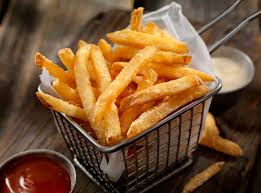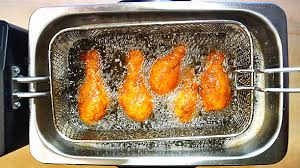Health Desk
Sandeep Dhand Ludhiana
Oily foods, often characterized by their high fat content, are ubiquitous in many diets worldwide. From fast food to traditional dishes, oils and fats play a significant role in culinary practices. While these foods can be delicious and satisfying, it is essential to understand both their benefits and potential drawbacks to make informed dietary choices.

Benefits of Consuming Oily Food
- Essential Nutrients : Oils and fats are vital for our bodies as they provide essential fatty acids that cannot be synthesized by the body. These include omega-3 and omega-6 fatty acids, which play crucial roles in brain function, inflammation regulation, and heart health. For instance, fish oil is rich in omega-3 fatty acids, which are beneficial for reducing the risk of heart disease and improving cognitive functions.
- Energy Source : Fats are a dense source of energy. Each gram of fat provides nine calories, which is more than double the energy provided by proteins or carbohydrates. This makes oily foods particularly valuable for individuals needing high energy intake, such as athletes or people with high physical activity levels.
- Vitamin Absorption : Certain vitamins, such as A, D, E, and K, are fat-soluble, meaning they require fat for proper absorption in the body. Consuming oily foods can help ensure that these vitamins are adequately absorbed, which is crucial for maintaining various bodily functions, including immune response, vision, bone health, and skin health.
- Satiety and Taste : Fats contribute to the palatability of food, making dishes taste richer and more satisfying. They also slow down digestion, which can help in feeling fuller for longer periods. This satiety can potentially aid in weight management by reducing overall food intake.

Drawbacks of Consuming Oily Food
- Weight Gain and Obesity : While fats are a dense energy source, excessive consumption can lead to weight gain and obesity. High-calorie intake without adequate physical activity results in the storage of unused calories as body fat. This is particularly concerning with foods high in unhealthy fats, such as trans fats and saturated fats, commonly found in fast food and processed snacks.
- Heart Disease : Regular consumption of foods high in unhealthy fats can increase the risk of cardiovascular diseases. Saturated and trans fats can raise LDL (bad) cholesterol levels in the blood, leading to the buildup of plaques in the arteries. This condition, known as atherosclerosis, can result in heart attacks, strokes, and other cardiovascular issues.
- Digestive Issues : Excessive oily food intake can overwhelm the digestive system, leading to discomfort such as bloating, indigestion, and diarrhea. This is particularly problematic for individuals with conditions like irritable bowel syndrome (IBS) or gallbladder disease, where fat digestion is already compromised.
- Nutrient Imbalance : A diet high in oily foods can lead to an imbalance of nutrients. Prioritizing high-fat foods often means less consumption of fruits, vegetables, whole grains, and lean proteins, which are essential for a balanced diet. This imbalance can result in deficiencies in fiber, vitamins, and minerals, negatively impacting overall health.

Striking a Balance
The key to harnessing the benefits of oily foods while minimizing their drawbacks lies in moderation and the choice of fats. Here are some guidelines to help achieve a balanced approach:
- Choose Healthy Fats: Focus on incorporating healthy fats into your diet, such as those found in avocados, nuts, seeds, and olive oil. These sources provide beneficial monounsaturated and polyunsaturated fats.
- Limit Unhealthy Fats: Reduce the intake of foods high in saturated and trans fats. This means cutting back on fried foods, baked goods, and processed snacks.
- Portion Control: Be mindful of portion sizes when consuming high-fat foods. Even healthy fats can contribute to weight gain if consumed in large quantities.
- Balanced Diet: Ensure your diet includes a variety of food groups to provide a wide range of nutrients. Incorporate plenty of fruits, vegetables, lean proteins, and whole grains alongside healthy fats.
- Cooking Methods: Opt for healthier cooking methods such as baking, grilling, or steaming instead of frying. This can significantly reduce the amount of oil used in meal preparation.
- Read Labels: Pay attention to food labels to identify hidden fats, especially trans fats, in packaged foods. Look for terms like “partially hydrogenated oils” which indicate the presence of trans fats.

Conclusion
Oily foods, when consumed in moderation and chosen wisely, can be a beneficial part of a balanced diet. They provide essential nutrients, energy, and aid in the absorption of vital vitamins. However, it is crucial to be aware of their potential drawbacks, such as weight gain, heart disease, and digestive issues. By making informed choices and adopting a balanced approach, it is possible to enjoy the benefits of oily foods while minimizing their negative impacts on health.

